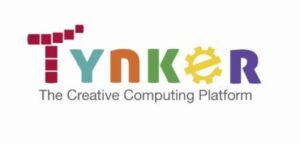Book a FREE Trial
See why Code Galaxy is the #1 online coding
school of choice for students & parents.

In today’s fast-paced and technology-driven world, the importance of equipping children with coding skills cannot be overstated. As a foundational skill for the 21st century, coding not only opens doors to future career opportunities but also enhances critical thinking and problem-solving abilities.
Recognizing this need, platforms like Scratch and Tynker have risen to prominence, offering engaging and kid-friendly environments for learning programming and have made coding accessible and enjoyable for kids.
However, with each platform bringing its unique offerings to the table, choosing the right one can be a dilemma for parents and educators. How then do you make the Scratch vs Tynker choice?
This article will delve into the specifics of each platform, comparing their features, curriculum, and overall suitability to help you make an informed decision.

Developed by MIT, Scratch is a free, block-based coding platform aimed at children aged 8 to 16. It encourages young learners to create interactive stories, games, and animations, fostering creativity and logical thinking.
What sets Scratch apart is its strong emphasis on creativity and interactive learning. The platform invites children to immerse themselves in the creation of interactive stories, games, and animations. This isn’t just about learning to code; it is about using code as a medium for storytelling and creative expression.
Children using Scratch are encouraged to think imaginatively, weaving narratives and bringing them to life through the interactive elements they code. This blend of storytelling and technical skills is a potent formula for enhancing both creative and logical faculties in young minds.
The interface of Scratch is designed with the user experience of children in mind. It is intuitive and inviting, removing any barriers that might impede the learning process. The drag-and-drop functionality of the coding blocks simplifies the construction of programs, allowing kids to focus more on what they want to create rather than getting bogged down by complex syntax.
Moreover, Scratch provides a safe and supportive environment where children can experiment, explore, and learn at their own pace. It is an ideal starting point for any child looking to delve into the world of programming. The skills learned on Scratch lay a solid foundation for more advanced programming concepts and languages in the future. By fostering a love for learning and creativity through coding, Scratch plays a pivotal role in nurturing the next generation of innovators and problem solvers.
Related reading: Scratch Coding Tips for Beginners
Is Scratch Safe for Kids? What Parents Should Know

Tynker presents itself as a versatile and comprehensive coding platform tailored to cater to children across a broad age spectrum, ranging from 5 to 18 years old. Unlike platforms that solely focus on the introductory aspects of coding, Tynker’s curriculum is designed to evolve with the growing competencies and interests of its users. Initially, for the younger age group, it adopts a block-based coding approach, similar to Scratch, which simplifies the coding process and makes it accessible and enjoyable.
As children progress and become more confident in their coding abilities, Tynker seamlessly transitions them to more sophisticated, text-based programming languages such as Python and JavaScript. This gradual shift not only broadens their skills but also prepares them for real-world coding scenarios. It is an approach that effectively bridges the gap between elementary coding and professional-level programming, providing a solid foundation for those who aspire to delve deeper into computer science.
Beyond just coding, Tynker stands out for its incorporation of a wide array of STEM (Science, Technology, Engineering, and Mathematics) learning activities. The platform offers courses that extend into diverse fields like robotics and game design, including popular modules like Minecraft modding. This expansive curriculum ensures that children with varying interests find something that resonates with them, whether it is creating their own games, exploring the intricacies of robotics, or even delving into Minecraft to learn coding through game modification.
In essence, Tynker is more than a coding platform; it is a comprehensive educational tool that nurtures not only programming skills but also fosters a broader understanding of STEM subjects. Its progressive curriculum makes it an ideal platform for children who are just starting their coding journey as well as for those looking to expand their knowledge to more advanced levels of computer science.
Related Reading: Top 10 Scratch Alternatives in 2023
Scratch and Tynker, while distinct in their offerings, share several core features that make them popular choices for introducing children to the world of coding. Their similarities extend beyond the basic premises of block coding and project-based learning, encompassing various aspects that enrich the learning experience. Let’s look at a few similarities between Scratch and Tynker:
Both Scratch and Tynker provide interactive environments where learning is not just about writing code but about seeing it come to life. This interaction enhances engagement and helps reinforce the concepts being taught.
In both platforms, there is a significant emphasis on customization. Children have the freedom to tailor their projects according to their interests, whether it Is creating a specific type of game or animation. This personalization makes learning more relevant and enjoyable.
Scratch and Tynker are equipped with a wealth of educational resources. These include tutorials, how-to guides, and comprehensive support materials that are designed to help learners at every step of their coding journey.
Both platforms provide resources for parents and educators. This includes tools for tracking progress, resources for lesson planning, and guides on how to integrate coding into broader educational contexts.
The interfaces of both Scratch and Tynker are designed to be user-friendly, especially for children. The layouts are intuitive, making navigation and project creation straightforward and less daunting for first-time coders.
Recognizing the global user base, both platforms offer language translation features, making them accessible to a wider audience. This is crucial in breaking down language barriers in learning.
Given their young user base, both platforms place a high emphasis on online safety and content moderation. This ensures that online communities are safe spaces for children to learn and share.
See why Code Galaxy is the #1 online coding
school of choice for students & parents.
Scratch and Tynker use gamification to make the learning process more engaging. This includes earning badges, completing coding challenges, and receiving feedback in a game-like format which can be highly motivating for young learners.
Both platforms offer opportunities for cross-curricular learning. For instance, children can integrate mathematics or storytelling into their coding projects, thereby enhancing their overall educational experience.
In summary, Scratch and Tynker, despite their unique features, share several commonalities that make them excellent choices for children’s coding education. Their emphasis on an interactive, flexible, and safe learning environment, coupled with a range of resources for learners, parents, and educators, positions them as leading platforms in educational technology.
When comparing Scratch and Tynker, two leading platforms in children’s coding education, several key aspects emerge that differentiate them, each tailored to suit various learning needs and preferences. Let’s look at the features that differentiate these two platforms:
Scratch’s curriculum is primarily centered around creative coding projects. It encourages children to use their imagination to create games, stories, and animations. This open-ended approach allows for a great deal of flexibility, enabling kids to explore coding concepts at their own pace and according to their interests. The emphasis here is on learning through exploration and creation, making Scratch particularly appealing for children who thrive in a less structured learning environment.
Tynker, in contrast, offers a more structured curriculum. It begins with block-based coding similar to Scratch but progressively guides learners towards more advanced, text-based programming languages like Python and JavaScript. This structured approach is designed to build a solid foundation in coding, with clear milestones and objectives along the way. Tynker’s curriculum is comprehensive, covering a wider range of topics and offering a pathway from elementary coding to more advanced concepts.
Scratch is typically recommended for children aged 8 to 16. This age range aligns well with the platform’s level of complexity and creative freedom, making it suitable for children who are just beginning to explore the world of programming.
Tynker, on the other hand, caters to a broader age range, starting from as young as 5 up to 18. The advantage here is that Tynker grows with the child, offering more complex and challenging projects as the child’s coding skills develop. This makes Tynker a more versatile platform, capable of engaging children at various stages of their developmental journey.
One of Scratch’s most appealing features is that it is completely free. This makes it highly accessible to a wide range of users, regardless of their economic background, and is an ideal choice for educators and parents looking for a cost-effective way to introduce children to coding.
Tynker, while offering a selection of free content, also provides paid subscription options. These paid plans include access to more advanced features, additional learning resources, and a wider variety of courses. The pricing model allows Tynker to offer a more comprehensive educational package, which can be beneficial for those seeking a more in-depth coding education.
Tynker stands out with its detailed progress tracking and reporting tools. These are particularly useful for parents and educators who wish to monitor the learning progress of their children or students. This feature allows for a more guided learning experience, ensuring that children are on track with their coding education.
Scratch, while offering a highly educational and engaging platform, does not emphasize progress tracking and reporting as much as Tynker. The focus is more on exploration and creativity rather than structured learning progression.
In summary, Scratch’s curriculum leans towards a more exploratory and open-ended approach, ideal for sparking creativity and interest in coding. Tynker, in contrast, provides a more structured, lesson-based approach, suitable for learners who benefit from a more guided and progressive educational structure.
Ultimately, deciding whether Scratch or Tynker is the best fit for a child’s coding education hinges on several personal factors that vary from one learner to another. It’s essential to consider the individual child’s learning style – whether they flourish in a more open-ended, creative environment that Scratch offers, or if they would benefit from the structured, progressive learning path laid out by Tynker.
Related Reading: Scratch Vs Python: Which is Best for My Child?

Selecting the right coding platform for your child depends on several factors. Consider your child’s age, interests, and learning style. If your child thrives in a structured learning environment and you’re looking for a comprehensive coding education that progresses to advanced levels, Tynker might be the better choice.
At Code Glaxy, we understand that every child has a unique approach to learning coding and so we have created a learning pathway that suits them.
Our platform offers a delightful merger of education and entertainment and our well-curated courses are tailored to guide them through the journey of coding
Whether it is a whimsical animation, an interactive story, or a dynamic game—our experienced tutors and overall learning environment will make your child’s creative dreams a reality.
As a Code Galaxy Parent, you aren’t left out either. Your kids stay learning and you stay in the loop with weekly reports to track your child’s progress.
So, why wait? Let your kids dive headfirst into the dynamic and life-changing world of coding.
Sign up for a free trial today.
See why Code Galaxy is the #1 online coding
school of choice for students & parents.